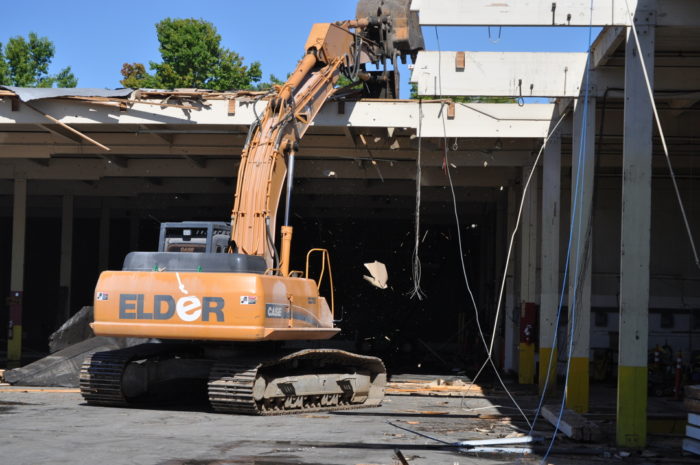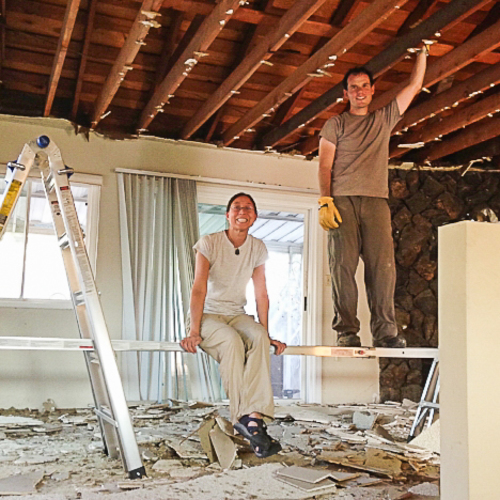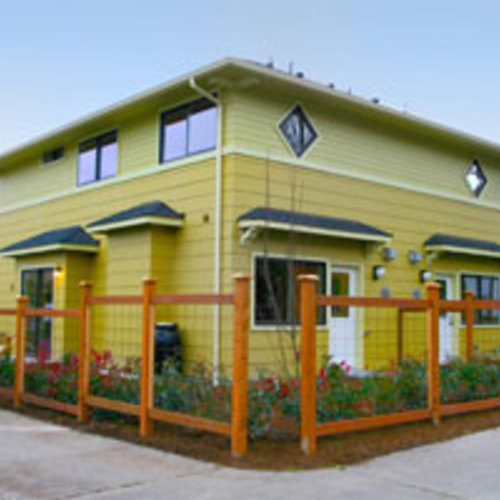
Image Credit: Elder Demolition
The demolition of a building is a carefully orchestrated, thoroughly researched affair. Demolition contractors must be conscientious about both employee safety and environmental safety, or else risk losing their business licenses. Just like general contractors, demolition experts are required to follow OSHA standards for employee safety. And demolition firms must also abide by EPA standards guiding environmentally safe deconstruction techniques. Hazardous construction materials, such as asbestos, must be safely removed before a building can be demolished.
Some forward-thinking demolition companies are exceeding government standards and are finding innovative new ways to reuse old building materials, rather than sending them straight to the landfill. Because they have a unique perspective on how to best take down buildings, commercial demolition experts can teach residential contractors quite a bit about material selection, building methods and more.
Focusing on the eco-friendly lessons of demolition has a definite cost-value for residential builders, who have seen a spike in consumer demand for green construction. Cradle-to-cradle building techniques that anticipate green demolition down the road can contribute points to LEED certification – the Holy Grail of earth-friendly building. The following is a look at some of the things industrial demolition contractors urge residential builders to keep in mind.
Limiting exposure to dangerous chemicals
Of course, residential building contractors are aware of the dangers of asbestos, lead and other hazardous materials in home construction. No new homes contain these toxins, but it’s not unusual for residential contractors to be hired for retrofitting work to bring an older home up to code. Here are a few examples of irritating but not illegal hazards residential construction workers could see while working in older buildings:
Synthetic mineral fibers (SMF). These are fibrous products made from ceramic, fiberglass and rock wool. Studies have found that SMFs aren’t as noxious as asbestos, so they are still used in sound and thermal protection products. Irritation to the eyes, nose and throat is the most common symptom of SMF exposure, but some question whether SMFs could also cause lung cancer, since they sometimes contain fiberglass. Industrial demolition experts recommend requiring workers to wear respirators and protective clothing when SMF contact is possible.
Wood dust containing formaldehyde. This wood dust can become stuck in the nasal passages when inhaled, and it is thought to have caused nasal cancer in some woodworkers. Wood paneling and particleboard sometimes contains the toxic substance formaldehyde; when the wood is cut or otherwise manipulated, formaldehyde-laced dust is sent into the air, posing a major risk for nearby workers. For this reason, demolition contractors recommend wearing protective respiration gear when dealing with particleboard and paneling.
Lead paint. One hazard that’s frequently overlooked is the danger of torching steel beams that have been painted with lead paint. Simply cutting a few painted beams can expose a builder to airborne lead levels that are off the charts. In these cases, OSHA requires workers to be provided with respirators, protective clothing and hand washing stations.
These are only a few of the materials demolition companies must carefully monitor and prepare for when taking down buildings. Indeed, OSHA has an entire set of standards for demolition procedures. If your team isn’t confident in this area, consider consulting with a commercial demolition professional. A longstanding demolition company will have wide-ranging experience in taking down everything from air traffic control towers to factories. Their experts can provide unique insight into how to best remove chemical hazards.
Fall protection
Because demolition companies are in the business of tearing things up and creating holes, they’re acutely aware of the importance of fall protection. When working around any hole, open wall or open roof with a fall greater than 6 feet, demolition workers are typically required to wear full body restraints. These same hazards are often present during the construction phase, as well, which means fall protection is just as important for builders.
Recycling concrete, steel and other naterials
Green industrial demolition contractors know what may be recycled from a defunct building. This information can come in handy when residential builders are selecting earth-friendly building materials. From a commercial demolition perspective, the materials listed below can effectively be recycled upon demolition. In fact, with disposal costs as high as they are, it’s often worthwhile to pay for the labor it takes to separate them out.
Concrete. A single demolition project can yield tons of concrete. Fortunately, this concrete may be crushed into gravel, a high-demand material in new building projects. Some industrial demolition contractors even employ enormous, mobile concrete crushers that can easily process all concrete on-site.
Steel. With the right equipment and expertise, steel and other scrap metals can be processed for recycling into new products.
Interior doors and beams. Wood doors, posts and beams in good condition can often be sold or reused – there are plenty of architectural salvage companies that are interested in these types of materials. If the condition is too poor for reuse, the wood can be recycled.
Sinks and toilets. Again, if they’re in good condition, these fixtures can usually be reclaimed by an architectural salvage company. Otherwise, porcelain models can be recycled with the concrete, while stainless steel fixtures can be recycled with the other scrap metals.
Construction and demolition are the two ends of a building’s lifecycle, so it makes sense that those responsible for each phase would have plenty to teach each other. If your contracting crew could use an injection of fresh building knowledge, consider learning from a demolition expert.
Elder Demolition is a fully licensed and insured demolition company based in Portland, Ore., with certifications for hazardous waste handling as well as broad experience with LEED-certified green demolitions.
Weekly Newsletter
Get building science and energy efficiency advice, plus special offers, in your inbox.














8 Comments
#1 Rule
Make sure you tear down the right house... http://www.cnn.com/video/#/video/us/2012/09/09/dnt-wrong-house-torn-down.klrt
Response to Armando
Armando,
The response of the demolition contractor is priceless: "I messed up." Talk about a bad day at work!
"LEED certification – the Holy Grail of earth-friendly building"
Hmmm.. I think there's more than a few in the green building world who would take issue with that statement ...... Otherwise, good article!
There are worse days (and better rules) than that...
Rule #1 is to not star in this movie, whether it's the right building or not:
http://www.nwcn.com/home/?fId=163633056&fPath=/news/local&fDomain=10212
I have a close personal relative who works for that company who was selected be the crane operator to finish the job. His friend & co-worker is going to survive, but it's going to be very long road, and doubtful that he'll be coming back to work.
Reclaiming a much as possible from commercial demolition has become pretty standard across the industry, but it's still a tough, dirty, sometimes dangerous job, even with the necessary personal protection gear.
“[Deleted]”
“[Deleted]”
“[Deleted]”
“[Deleted]”
Log in or create an account to post a comment.
Sign up Log in